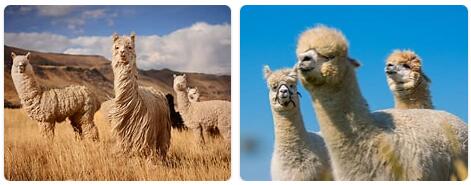In 2009, Peru had an estimated population of 29 million people, with a growth rate of 1.4%. The economy was largely based on exports of commodities such as minerals, oil and gas, coffee and cocoa. Other major industries included fishing and tourism. Foreign relations were mainly focused on trade agreements with the United States, China, Japan and other countries in the Americas as well as regional organizations such as the Pacific Alliance and the Organization of American States (OAS). In terms of politics, Peru was a constitutional democracy with a presidential system of government. In 2009, Alan García was the president at that time and his party had a majority in both houses of Congress. See internetsailors for Peru in the year of 2011.
Yearbook 2009
Peru. In mid-April, former President Alberto Fujimori (President in the years 1990-2000) was sentenced after 16 months to a 25-year prison sentence by a Lima human rights court. According to countryaah, the court found that Fujimori had knowledge of and even given his consent to murders and kidnappings, mostly carried out by a branch of the army security service. Fujimori appealed the verdict immediately. Ex-President’s daughter Keiko Fujimori, who is aiming to stand in the 2011 presidential election, declared that the ruling was political and will be torn down by her, and that she will instead face current president Alan García if she wins the election. However, the chances of her doing so are small; 70 percent of Peruvians believe that Fujimori is guilty of what he is accused of. See ABBREVIATIONFINDER for abbreviation PE which stands for the nation of Peru.
Ironically, the Maoist guerrilla group Sendero Luminoso, whom President García tried in vain to defeat during his last term of 1985-90 and which Fujimori succeeded, has shown increased activity under García’s current mandate. In April, 14 soldiers died in an ambush in Vizcatan in southern Ayacucho Province, and until then 33 soldiers had been killed and 43 injured during the army’s latest offensive that began in August 2008. The army claimed that one of Sendero Luminoso’s leader, “Comrade Artemio”, was injured in an attack on a guerrilla base in Upper Huallaga Valley in July.
The worst outbreak of political violence in recent years occurred in early June, when Indians in the Amazon Province clashed with police and 33 people were killed. The Indians objected to a congressional decision to open for private investment and exploitation in an area they consider to be traditionally owned by Native Americans.
Garcia’s comeback and conflict over natural resources
President Toledo’s party, Perú Posible, chose not to stand in the 2006 presidential election, thus prompting a startling comeback for Social Democrat Alan García, who had also been president from 1985 to 1990. García, who was in charge of tight economic policy, a close collaboration with Brazil and a free trade agreement with the United States, in the second round of elections overcame nationalist left-wing populist Ollanta Humala, who wanted closer cooperation with left-wing regimes in neighboring countries, including Venezuela’s President Hugo Chávez. In the parallel election to a new National Assembly, Humala’s party – the National Party of Peru – achieved a pure majority. Garcia and the APRA Party(Alianza Popular Revolucionaria Americana) thus limited its political scope.
García’s second government was characterized by economic upswing in government revenues and investments due to high commodity prices in the global market, and in the period from 2006 to 2011, the share of the poor was reduced from 49 to 28 percent of the population. At the same time, a number of conflicts arose around social and environmental issues related to mining and oil and gas activities, where the interests of the local population were against national economic considerations. García created controversy in 2007 when he expressed his excitement over what he believed were special interests of indigenous peoples and unproductive landowners who were hindering the exploitation of Peru’s rich natural resources. To overcome this, the government in 2008 therefore introduced a number of regulatory changes and legislative proposals in connection with the implementation of a trade agreement with the United States. Resistance fromAboriginal groups in the Bagua area ended violent confrontations in June 2009 in which 33 people were killed (23 policemen and ten civilians). The incident, known as ” El Baguazo “, caused a political crisis and legislative amendments had to be withdrawn.
The lawsuits against Fujimori
Until November 2005, Peruvian authorities had tried in vain to persuade Japan to extradite former President Fujimori so that he could answer dozens of charges of corruption and human rights violations during his presidency. When he unexpectedly appeared in Chile’s capital Santiago, speculation arose about a political comeback. However, Chilean authorities arrested Fujimori immediately upon request from Peru, and extradited him to his home country where he could be prosecuted for seven human rights and corruption cases.
In April 2009, Fujimori was found guilty of gross human rights violations in two cases and sentenced to 25 years in prison. The verdict was historic when it was the first time in world history that a former head of state was brought to justice for human rights violations in his own country. The lawsuits against Fujimori for corruption charges followed later.
